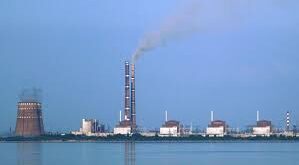Coal-fired power generation in the United States jumped at the start of the year, but no thanks to President Donald Trump’s push for “beautiful, clean” coal.
The coldest winter in six years boosted electricity demand, while the surge in natural gas prices made gas-fired generation more expensive than coal. As a result, U.S. power producers leaned more heavily on coal – where possible – than on natural gas to meet electricity demand.
Amid below-average temperatures, January 2025 saw a 5.5% annual increase in total power generation in the United States, according to EIA data. Electricity generation from coal increased in all parts of the country, except in the West, compared to January 2024. The change in electricity generation from natural gas was more mixed throughout the country. The MidAtlantic and Southeast both saw an increase in natural gas generation, while the Northeast, Central, West, Florida, and Texas all saw a decrease in electricity generation from natural gas compared to January 2024.
More coal-fired generation was activated early this year amid soaring electricity demand in the cold snaps. Higher natural gas prices reduced the profit margins of power producers, and they generated more coal-fired power while curbing production from some gas-generating units. The benchmark U.S. natural gas price at Henry Hub more than doubled in one year—from $1.83 per million British thermal units (MMBtu) at this time in 2024 to about $4 per MMBtu in March.
In the first quarter of this year, U.S. gas power generation fell through March 22 by 2% from a year earlier, according to data from LSEG cited by Reuters market analyst Gavin Maguire.
While natural gas saw a slight decline, coal power generation nationally jumped by 21% in January through March compared to the same period of 2024, the data showed.
While the benchmark natural gas prices surged, coal prices have averaged about $76 per ton so far in the first quarter, which is an increase of only 7% compared to the average U.S. coal price for the first quarter of 2024, according to the LSEG estimates.
As a result, emissions from the U.S. power sector rose by 9% in the January-February period and hit a level last seen six years ago, per estimates from energy think tank Ember quoted by Reuters’ Maguire.
Natural gas prices could ease somewhat going into the so-called shoulder season between April and June, but a rally could follow in the summer months with an expected spike in electricity demand for cooling.
Higher natural gas prices could spur more coal-fired power generation and, naturally, a rise in U.S. power sector emissions.
In its Short-Term Energy Outlook (STEO) for March, the EIA sees the Henry Hub price averaging around $4.20/MMBtu in 2025, which is 37% higher than the forecast in October.
The natural gas price is expected to average even higher in 2026—about $4.50/MMBtu, as global demand for LNG grows and U.S. LNG export facilities ramp up capacities.
In this context, coal is likely to enjoy a short-term rebound in U.S. electricity generation as natural gas prices rise, the EIA said in the STEO.
Increased overall electricity demand, along with higher natural gas prices, could raise U.S. coal generation by 6% in 2025, while natural gas generation would drop by 3% as a result of higher fuel costs. In 2026, the EIA expects coal generation to fall by 8%, while natural gas generation will stay relatively flat.
The EIA expects U.S. energy-related carbon dioxide (CO2) emissions to increase by 2% in 2025 and to decrease by 1% in 2026. Rising coal emissions are linked to an expected growth in coal-fired electricity generation.
But CO2 emissions from coal are expected to decrease in 2026 as coal-fired generation is set to drop back to near-2024 levels, the EIA reckons.

 Iran Energy News Oil, Gas, Petrochemical and Energy Field Specialized Channel
Iran Energy News Oil, Gas, Petrochemical and Energy Field Specialized Channel



